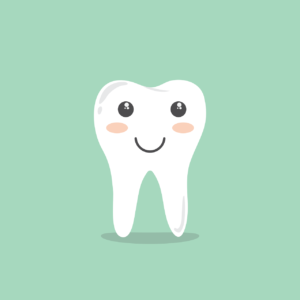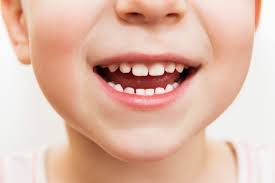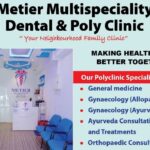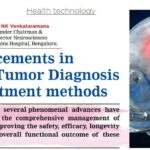Dental Stem Cell Banking – A New Ray of Hope. If you were born in an era where stem cell banking was not popular and facilities were not available, you do not have to think again. Also if you have missed banking umbilical cord stem cells at the time of birth, again you do not have to repent. New research has shown that you bank these stem cells through the milk teeth of your child between 5-11 years of their age and use the same at the latter stage of life when the need arises.


What are Stem Cells?
Stem Cells are the basic building blocks of our body and hence the potential to develop into many different cell types. It serves as repair system, as they can divide without limit to replenish other cells and give rise to a number of tissues that constitute different organs. Stem cells are the mother or master cells, which can convert into all other cells, tissues and organs in the body. A stem cell can become any one of the 220 different cells in the body.
Stem cells are distinguished from other cell types by two important characteristics. They are unspecialised cells capable of renewing themselves through cell division, even after long periods of inactivity. In some organs such as gut and bone narrow, stem cells regularly divide to repair and replace worn out or damaged tissues. Given their unique regenerative capacity, stem cells offer new potential for treating more than 75 diseases. Stem cells have the remarkable potential to develop into many different cell types in the blood during early life and growth. When stem cell divides, each new cell has the potential either to remain as stem cell or become another type of cell with more specialised function such as muscle cell or brain cell.
Why Stem Cell are stored?
Cord blood, umbilical cord tissues, dental pulp and bone marrow are rich source of stem cells that have the ability to develop into other type of cells, to regenerate tissue, organs and blood vessels in treating a host of diseases. Unlike stem cells in a bone marrow, stem cells from other sources are immature and unspecialized. As a result patients who receive stem cells from these sources are less likely to reject the transplants. Stem cells had been successfully used to treat leukaemia or blood cancer thalassemia, blood related disorders, heart ailments, diabetes and neurological disorders. Research, clinical trials and therapeutic studies on stem cells are advancing rapidly every day. Stem cell transplants are being studied as possible tools forcerebral palsy, brain injuries and juvenile diabetes. The extracted stem cells are preserved cryogenicallyat minus196 Degree Celsius and can be used to treat future aliments.
Dental Pulp Stem Cells
Dental Pulp is the soft living tissue inside a tooth. Stem cells are found inside this soft living tissue. Dental Pulp is the goldmine for mesenchymal stem cells. This particular type of stem cells has the potential to differentiate into a variety of other cell types like neurons myocytes, osteocytes, chondrocytes, adipocytes, myocardiocytes, etc.
Tooth is a very special organ in the body for three different reasons:
- Tooth normally forms once the baby is delivered whereas, all the other organs initiates when the baby is inside the mother’s womb.
- Tooth is the only one organ which can be replaced
- Tooth is the youngest organ in the body as it will grow even after the other organs have stopped growing. For example wisdom teeth can erupt after 20 years also. Mesenchymal stem cells derived from teeth are highly immature and very aggressive.
The teeth are the great source of stem cells for banking. The most obvious reason is that it is easy to collect a baby tooth that is naturally falling out or a wisdom tooth being extracted. More importantly the dental pulpin child’s milk teeth and wisdom teeth are a goldmine for these mesenchymal stem cells. These teeth fall off naturally, so why discard when you can bank them.


The health of family is hidden in dental pulp. A single tooth can give a family a lifetime protection from life threatening diseases. After the initial evaluation of the deciduous tooth clinically, OPG X Ray will be taken. The root of the deciduous tooth should not be resorbed completely. At least 2/3rd of roots should be present and pulp tissue should be vital. Root canal treated tooth is useless and cannot be used as source of stem cells. 2 to 3 months before the exfoliation, these deciduous tooth will be extracted and stored in the research lab. This will be stored at -196 degree Celsius temperature. Heavily restored teeth or tooth with infected pulp will not be useful. After screening and written consent the tooth will be collected and stored. The tooth will be collected and stored immediately after the extraction. The deciduous teeth is transported at 2 to 8 degree Celsius within 48 to 72 hours. The viability of the pulp is very essential to maintain the survival of stem cells. Thus the collected sample will be checked for sterility, quantity, viability, proliferation, mesenchymal stem cell characters and growth properties. The collected sample will be stored using liquid nitrogen cryogenically with the temperature ranging from minus 172 to minus 196 degree Celsius. The patient will be given a certificate which is bar coded and can be retrieved whenever the necessity arises. This certificate must be stored and produced for the future retrieval of stem cells anytime during the life time of preservation.
Dental stem cell banking is the golden opportunity for parents to gift future health of their loved ones. Undoubtedly stem cells are going to be the face of future medicine. In today’s day and age, we place so much importance on insuring electronic goods, homes and automobiles, yet seem to forget our most precious gift of god, our children. So why hesitate, go and preserve child’s tiny milk tooth for better tomorrow of your loved ones.


Dr. Muralee Mohan Choontharu
Tejaswini Hospital
Mangalore – 575 002
Ph : 0824 2225995











